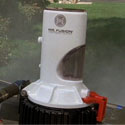
USCCS NOSTROMO (180286) Alien (1979) opens with a series of slow pans across the empty compartments of the commercial mining ship Nostromo, just moments before the computer, MU-TH-UR, prematurely awakens the crew from hypersleep. One of these pans includes the small kitchen space adjacent the ship's main dining area. 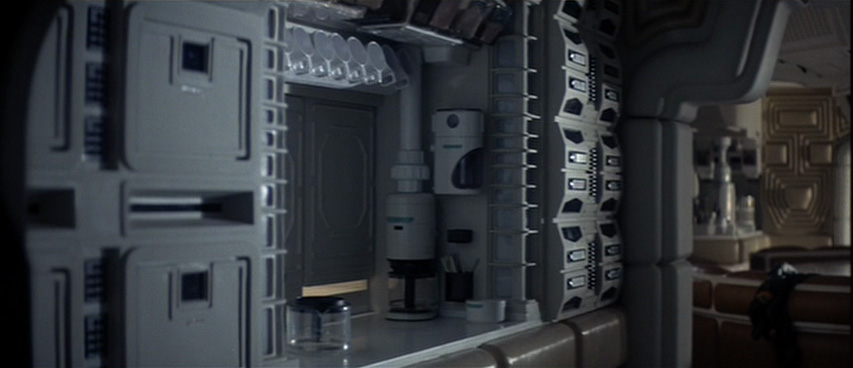 The set decorators chose to mount a present-day completely unmodified off-the-shelf kitchen appliance on the bulkhead. It is a coffee grinder produced by Krups. It was model number 223A, marketed under the name Coffina. Typically a device that sits on a counter, the Alien designers mixed things up a bit by hanging it on the wall. 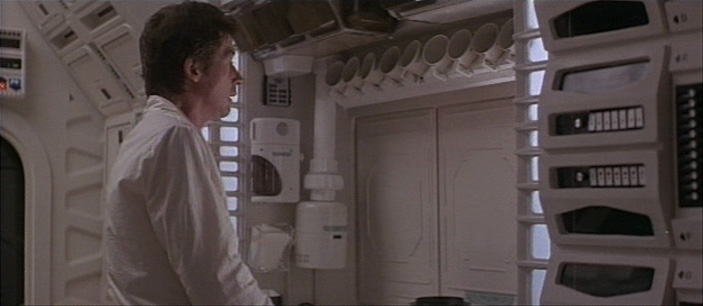 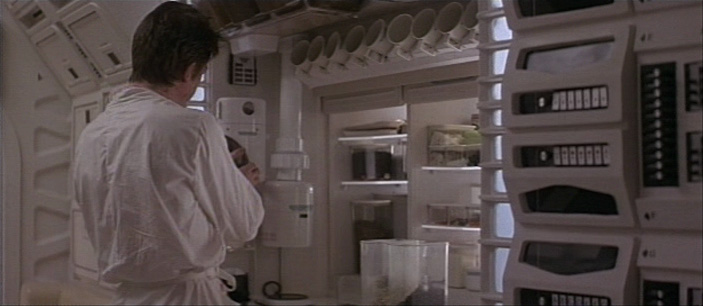  We never see this small kitchen nook again in the finished film, though there exists a cut scene where Nostromo's first officer, Kane (John Hurt), stumbles into the kitchen to pour some cereal and make coffee just after waking up. In this deleted sequence he uses the wall-mounted Coffina to do just what it was designed for: to grind coffee beans. He dumps a cup of coffee beans into the top of the device, activates it with a control on the back, then removes the plastic cup on the front to pour the coffee grounds into a cup. The black horizontal band around its diameter is a decal and is not engraved into the plastic. The dark marking on the side of the Coffina and the coffee maker is the Weyland-Yutani "wings" emblem that was plastered on nearly every surface of the corporation's mining ship. The logo is also printed on every single one of those mugs on the top rack. Based on the angles of both shots, one could presume that there are identical Krups grinders and coffee pots on either side of the kitchen nook. Eliminating the "Kane makes breakfast" scene does solve the problem of why a clearly recognizable coffee grinder readily available in any appliance store when the film was made in 1979 would be installed aboard Nostromo in 2122. But that's not what I'm getting at here. The thing is, by now you've probably recognized that coffee grinder from its more prominent and famous screen use: Mr. Fusion. "I NEED FUEL." 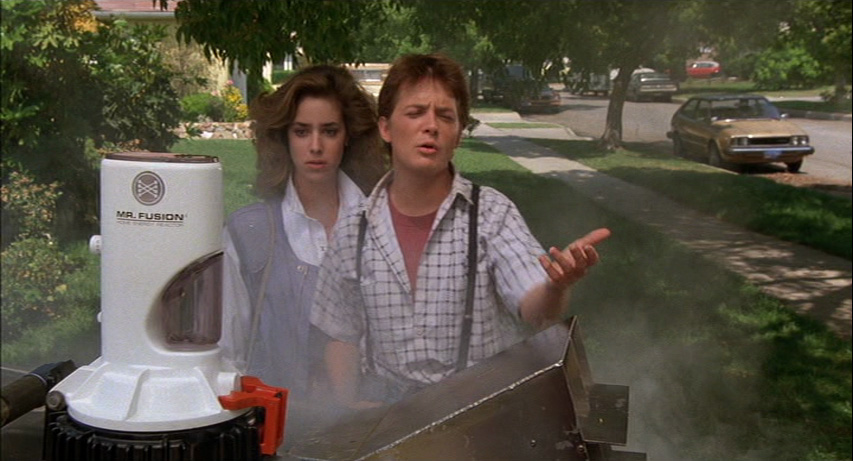 In the final scene of Back to the Future (1985) we are introduced to an interesting new piece of hardware from the future, the Mr. Fusion Home Energy Reactor. Its purpose was a throw-away joke at the end of a movie that wasn't expected to spawn a sequel. Its in-universe purpose was to offer a safer, more energy-efficient alternative to the Plutonium required earlier in the film to power the DeLorean's time circuits. As Mr. Fusion operates on garbage, it was clearly a futuristic, eco-friendly alternative. Mr. Fusion was constructed by mounting a Krups Coffina grinder on top of a custom-made base. The black, ribbed canister that it sits upon is the outer shell of a Singer magnetic disc memory core, an obsolete hunk of 1960s computers. It's possible to see that the large grey window (the grinds collecting cup) along the trailing edge the the unit doesn't lie flush with the housing. 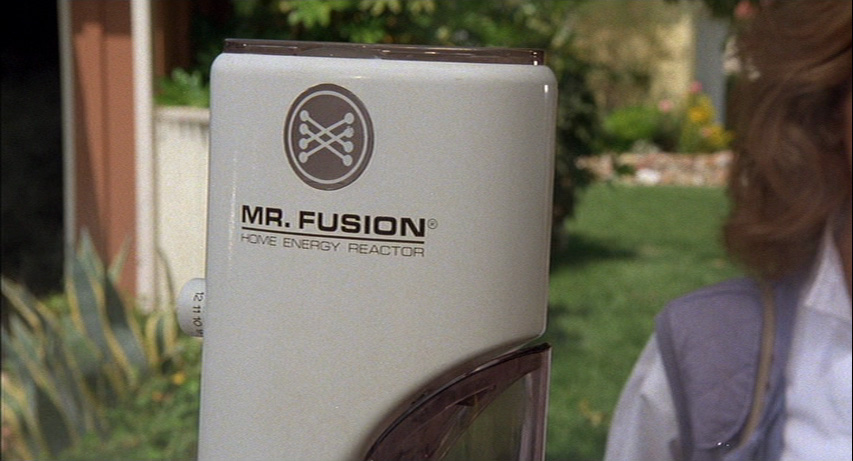 In a close-up it's easy to see that the filmmakers left Krups' original number markings on the control knob on the backside of the unit. The smaller nub lower down on the back of Mr. Fusion is the Coffina's on/off switch. Note also that the grey circle that the Fusion Industries logo is located on is not a graphical feature. It is a clear-backed decal applied to the original Coffina's translucent window into the bean chamber, allowing a user to gauge how many unground beans remain. In the second and third images from Kane in the kitchen, you can see beans inside the Nostromo unit through this window. 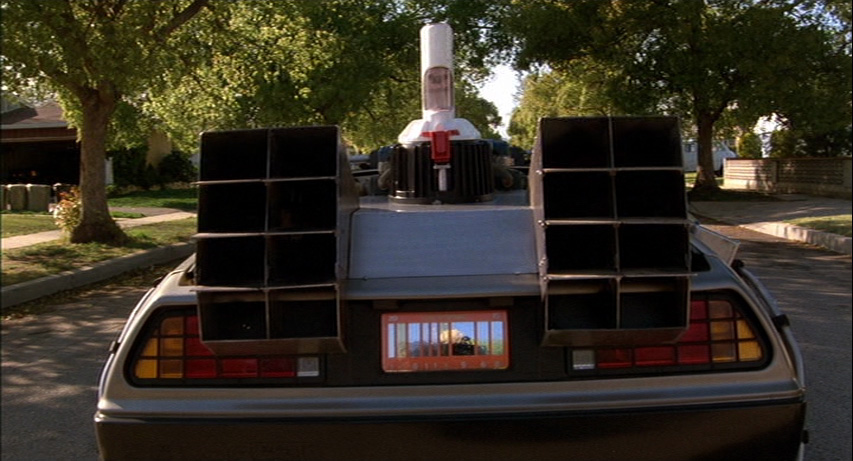 From the back it's possible to look through the clear collecting cup and see the spout where the ground coffee grains would fall from. You can also spot the top edge of the camera being reflected in the shiny 2015 bar code license plate. 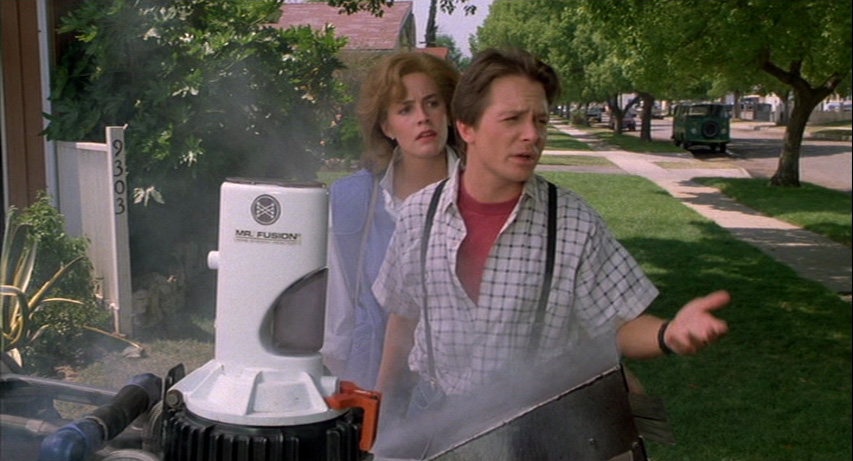 The final scene of the first movie was recreated four years later during the opening scenes of Back to the Future, Part II (1989). This was necessary because Claudia Wells opted not to return for the sequel and Elizabeth Shue was cast as Marty McFly's girlfriend, Jennifer Parker. Because Wells had been in the first movie's final scene it had to be reshot with Shue in the role. This resulted in slight differences in positions when you compare the two scenes side-by-side (not to mention different cars parked in the street, to say nothing of the size difference between Wells' and Shue's hair). 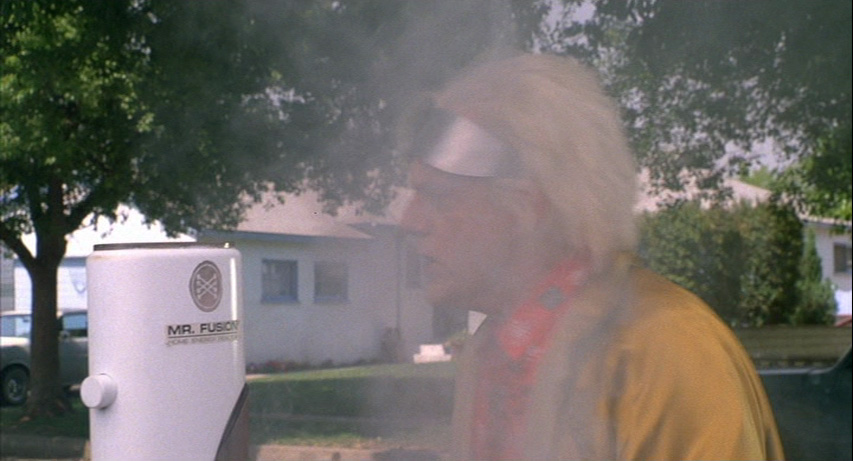 The opening scene in Part II employs a few different camera angles from its Part I equivalent, though the characters' actions and dialogue remain essentially the same. One new angle shows that by the time it came to do the sequel, someone has had the foresight to paint over the numbers on the Coffina's control knob. It is now a featureless peg on the back of Mr. Fusion. I can't help but notice that the "Mr. Fusion" decals on the Part II unit have a lot less finesse than in Part I. 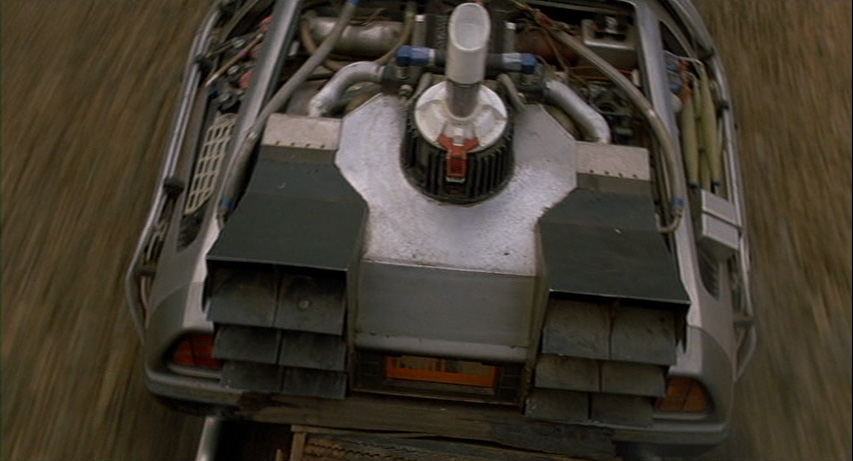 Near the end of Back to the Future, Part III (1990) we're given a shot looking down on the DeLorean's back deck, with Mr. Fusion featuring prominently. It looks like the translucent grey cap for the Coffina grinder might be completely missing. In any case, we can see down into to the top of the grinder's shallow bean collecting cup. You would pour the coffee beans into the top of the unit. 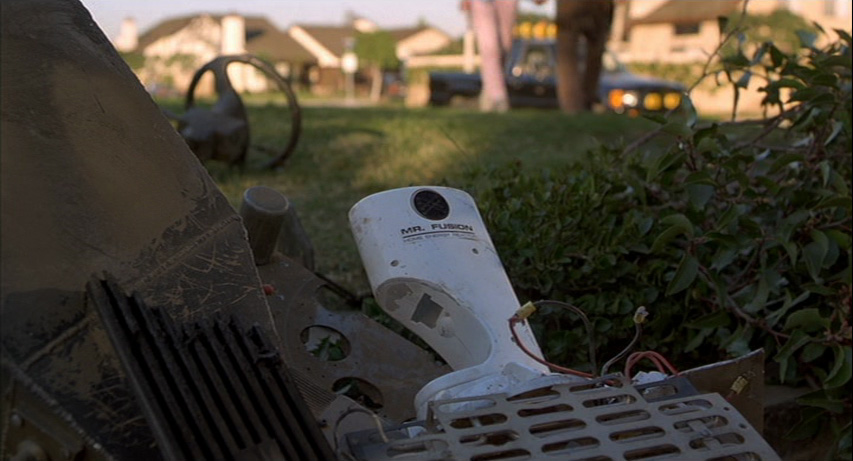 Our last view of Mr. Fusion, at the end of the third movie. The coffee grind collecting cup, the unit's lid, and the back control knob are missing, and the side window (with the Fusion Industries logo) looks to be blacked out from the inside. We don't see this right-hand side of the unit very often in the films so I'm not sure if the three screw holes in the side were filled for the on-screen hero cars. If you compare this shot to those of Kane working in Nostromo's kitchen, you can spot the round bump just below the grind spout in both units. Fun fact: Back to the Future series producer Bob Gale has an extra Mr. Fusion unit sitting on his desk, acting as a lamp. Unfortunately, Krups no longer manufactures this model of coffee grinder, having long since discontinued their Coffina line. That makes it seem even more unlikely that this particular model of coffee grinder will find its way into the kitchen of a 22nd century interstellar mining vessel. Written June 5, 2011 |
